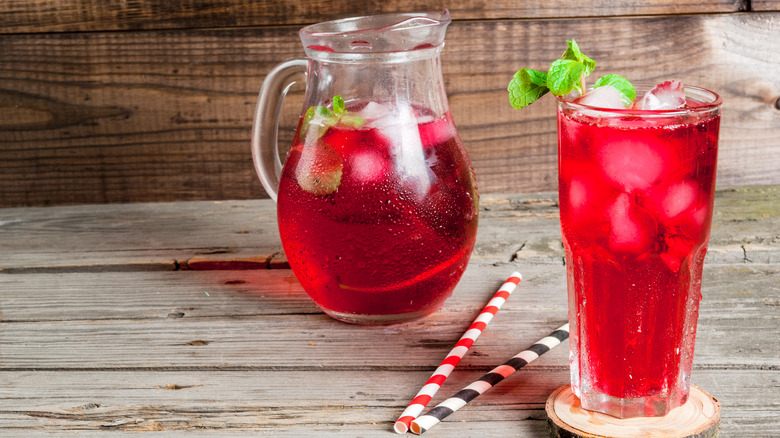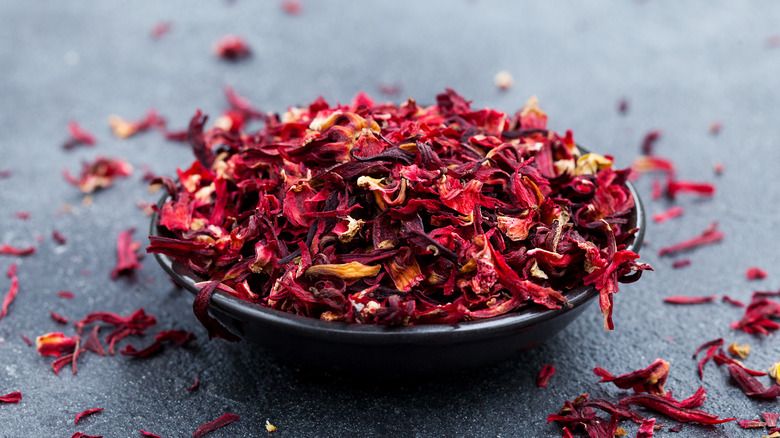The Rich History Of Drinking Hibiscus Tea On Juneteenth
The history of Juneteenth may go back hundreds of years, but hibiscus and other red foods and drinks used to celebrate the holiday are as old or older than the occasion itself. Juneteenth has its origins in Texas as a holiday, honoring the day of June 19th, 1865, when Black Americans in Galveston, Texas learned slavery had been abolished. Despite the fact that the Civil War had been over for several months, and the Emancipation Proclamation had been issued almost two and a half years earlier, the day became a celebration of Black independence and has since spread to become a nationwide holiday. And since the very beginning of Juneteenth celebrations, red foods have been part of the symbolism of the day — with modern feasts incorporating strawberries, barbecue, and red velvet cake. One of the oldest red consumables, however, is called "red drink," which often comes in the form of hibiscus tea.
Hibiscus was a popular plant in the African diaspora to the Western Hemisphere. Native to Africa, the hibiscus plant was brought over with enslaved Africans during the era of trans-Atlantic trade. The plant was considered medicinal, and was transported with the hope it would keep humans and animals from Africa alive during the brutal journey across the ocean. As a tropical plant, hibiscus thrived in the Caribbean and American South. There, it was embraced by enslaved Africans as a garden crop, which reminded them of their homeland and tied them to old culinary traditions.
Hibiscus tea on Juneteenth unites Black Americans with African traditions
As argued by food historian Adrian Miller, it was a combination of hibiscus tea, ginger, and other African spices like kola nut that became the base for red drink. Various red drinks were already popular in the South during the final days of the Civil War, and in the wake of emancipation, they became a celebratory beverage. Moreover, red drink actually took on several forms beyond hibiscus based on local conditions, since hibiscus didn't mesh well with the American climate. A version of the drink, mixing molasses and water back when molasses was more red hued, was even served on Emancipation Day in South Carolina in 1863. In the U.S., red drink could be things like strawberry cordials, fruit lemonades, and eventually in the early 20th century, red sodas like Texas' Big Red became popular.
The hibiscus form of red drink remained popular in the Caribbean in the form of a drink called sorrel. Caribbean immigrants to the United States then helped return hibiscus to popularity in America in the later 20th century. Over the last decade, the fresh flavors of traditional hibiscus tea have been gaining ground as part of a movement to re-embrace traditional West African cuisine, and as an antidote to more sugary forms of red drink like sodas and Kool-Aid. Drinking hibiscus tea to accompany traditional Juneteenth foods carries on a story of cultural transformation and perseverance, all while uniting people with the past.

